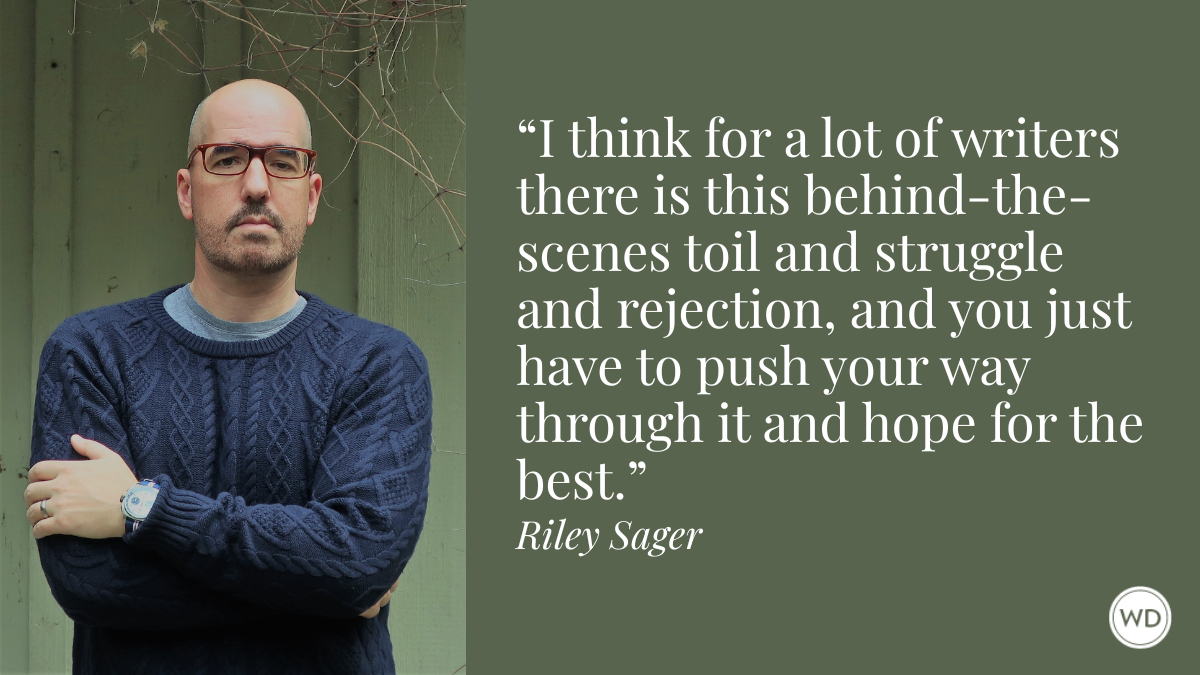Writing Strong Settings: Writing Prompts for Socially-Isolated Authors
How are writers supposed to write settings when we’re supposed to stay at home? Christine Meade offers writing prompts and tips for writing strong settings during social isolation.
For fiction writers looking to stay productive during either self-imposed or voluntary social distancing, it may seem a challenge to envision a setting beyond the cramped writing spaces of our kitchens with the dirty coffee mugs and the stack of books we will for sure get to with all this uninterrupted time at home.
For those creatives, like me, who are facing canceled freelance writing gigs and dried-up work opportunities, the pressure to create may feel immense. But I’m here to remind writers a good setting is crucial to provide readers with a means of escape, especially for those who are confined to their homes—potentially with a few un-schooled, feral-leaning children—for weeks on end.
The first long story I ever wrote was penned in elementary school and titled TheHellraiser, bearing no similarity that I know of to the 1987 supernatural horror film starring a needle-faced villain of the same title. The story began with a figure named Barbara—not ironically, my mother’s name; we fought a lot in my adolescence and I’m sure I was, ironically, an absolute needle-sized pain in the neck back then—emerging from the fog over a secluded pond during an early morning, late fall, in New Hampshire.
It may be no coincidence that my debut novel to be released April 14, The Way You Burn, is deeply rooted in its setting on a secluded pond in New Hampshire. Yes, it is the same pond and the same fog of mystery as my yet-to-be-published fifth-grade masterpiece. My parents purchased the small plot of pond-side property with an old hunting cabin from an elderly local fisherman in the mid-80s.
When my siblings and I were little, we stayed in the two-room shack with the small wood-burning stove. We soaped our skinny bodies in the pond and we peed in the outhouse my dad built behind the shack. All of these true-to-life details made my novel—and then some. We spent nearly every weekend away from our city home up at the shack, which later grew into a full-sized log cabin my father built in the 90s. It’s a place we still return to as a family today.
I have found that oftentimes, the places that I can stay the longest in fiction—as in years writing a novel—are often the settings that pierced my childhood in some way, the places that had a lasting impact on me, the effect of which I may not yet even understand.
But must a writer “write what they know”—as the old adage goes—when it comes to setting? I don’t believe so. I think it’s in a writer’s best interest, however, to write the places that haunt their dreams. And not in a nightmarish, Hellraiser sense, but more so, the places the subconscious revisits time and time again, whether in dreams, fantasies, or in fiction.
Here are some other ways setting can provide strong support for your creative writing:
Setting as Inspiration for Story
In New Hampshire, I often go for walks in the woods where it is very common to stumble upon small, family graveyards with headstones dating as far back as the 1700s. These prompt me to wonder about the families who used to live on the land before the forest took over. Where are the foundations of their old homes? The paths lovers walked centuries ago? Taking a closer look at the space around us can often serve as a useful prompt to get us to consider the backstory of a location’s past.
Prompt: Go for a walk in your neighborhood—keeping six feet of distance from others, of course—without a phone, dog, or companion and try to notice as much as you can. A historical plaque on a building you’ve never seen before? An ancient, craggy tree that looks like it has to be thousands of years old? Ask yourself the question—what is the story behind this [fill in the blank]? And then set to writing!
Setting for Mood/Tone
A setting can have a powerful influence on a novel’s tone, and in The Way You Burn, the moodiness of New England’s seasons mimics the ups and downs of my protagonist’s romantic entanglement. An unpredictable sky of dark clouds and a whipping wind has the power to convey a far different mood than a gentle sunrise stretching its rays over a mountain top. Using setting to influence mood and tone is a great way to create a sense of foreshadowing in fiction for the reader, so their interest is piqued as you begin to nudge them along the narrative’s emotional trajectory.
Prompt: Describe a childhood home from the perspective of an adult who remembers their youthful days with a rose-hued nostalgia. Next, write about that same house from the perspective of an adult who experienced some form of childhood trauma. In both cases, write about just the setting without giving specifics about character or background plot points and see how much a reader can infer from strictly physical, sensory description.
IndieBound | Bookshop | Amazon
[WD uses affiliate links.]
Setting for Character Development
In my novel, my protagonist David inherits a cabin from his grandfather, and the objects left behind in the home help David and the reader understand what kind of man his grandfather was. Detailed description of personal spaces—a favorite room, the contents of an individual’s purse, a family’s basement—can tell a lot about the people who inhabit them. For example, if a teen’s bedroom is described as having an impeccably made bed, color-coded file organizers for homework assignments, and a telescope perched at the window we get the sense this is a very different character than a teen who has a desk buried under an assortment of crumpled papers with half-written poems, a vape pen, and Snickers wrappers.
Prompt: Set a timer for five minutes and write about your character’s bedroom with as much detail as possible. Even if it doesn’t make it into your draft, this prompt is a great way for you to get to know your character better.
A steady, healthy diet of great fiction has yet to be proven to stave off viruses, but writing using these prompts is a surefire way to the plumb the fertile gardens of your story’s setting using surprising and unique sensory details.
Christine Meade is a writer, editor, and educator. She holds an MFA in creative writing from the California College of the Arts. A native New Englander, Christine currently lives and writes outside of Boston, MA. The Way You Burn is her first book, to be published by She Writes Press in April 2020. To learn more about Christine Meade’s life and work, visit her website, christine-meade.com.









